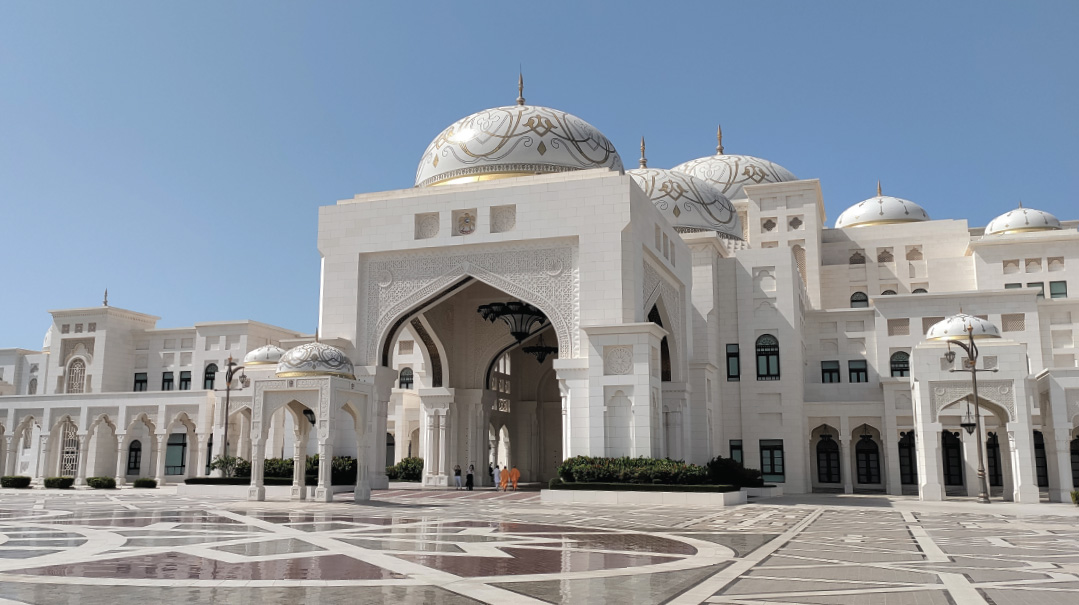Bridges in the Gulf
| March 7, 2023What compelled Abu Dhabi, the conservative Muslim capital of the UAE, to rescue the last few remaining Jews of Yemen?

Text and Photos by Ari Z. Zivotofsky and Ari Greenspan
Abu Dhabi, capital of the UAE (United Arab Emirates), is a conservative, religious Muslim country boasting a spectacular royal palace, a luxury hotel where all things drip gold (including 24-karat edible shavings on the coffee), a grand mosque that holds over 41,000 people, and stores selling camel milk chocolate. Yet it was recently instrumental in a dramatic, out-of-the-spotlight operation: saving the lives of the last Jews of Yemen.
It was a bittersweet chesed on the part of the Emiratis, as it essentially turned off the lights on the 3,000-year-old Jewish community, the oldest in the Diaspora — ending the ancient Jewish presence in Yemen for good.
We spent a week in the Persian Gulf, visiting and baking shemurah matzah with Jews in Kuwait, Bahrain, and Dubai. But our visit to Abu Dhabi would be a bit different — our main goal in visiting Abu Dhabi specifically, was to spend time with these very last Jews to leave Yemen and learn about their life and their customs.
Each of the Emirates has its own character. Dubai, as we found, is consistent with its reputation as Western, cosmopolitan, and flashy, with less of a flavor of local traditional culture. Abu Dhabi, on the other hand — a mere hour away by car — is more sedate, traditional, and conservative. As in Dubai, there is an emerging expat Jewish community as well as Chabad, but Abu Dhabi also has this small but tenacious Yemenite Jewish community.
Cancelled Plans
It’s not even that this replanted Yemenite community is continuing a chain, because there aren’t many indications of a former Jewish community anywhere near Abu Dhabi — although the 12th century Jewish traveler Benjamin of Tudela did report of a Jewish community in the town of Kis, which is in the modern Emirate of Ras Al Khaimah. That community seems to have long ago disappeared, although a lone tombstone with Hebrew writing from about the 15th century has been found in the area, possibly of a Jewish trader. (He also recorded the area’s famed pearl diving industry, the area’s key industry for centuries prior to the discovery of oil reserves.)
Life in Yemen for Jews was always tough and precarious and Yemenite Jews were tenacious in their adherence to tradition despite centuries of persecution. All males wore peyot, which they called “simanim,” “signs” that proudly identified them as Jews. But with a status of second-class citizen, or dhimmi, in the Muslim world, they were less protected and were at the mercy of the local populace. The hatred of Jews and the rigid form of Islam practiced in much of Yemen translated into a dangerous life of deprivation and fear.
In the 12th century, the Jews were threatened with forced conversion and turned to the Rambam for advice. In response, in 1172, he wrote his celebrated epistle to Yemen (Iggeres Teiman) where he encouraged: “Remember, my coreligionists, that on account of the vast number of our sins, G-d has hurled us into the midst of this people, the Nation of Ishmael, who have persecuted us severely, and passed baneful and discriminatory legislation against us… No nation has ever done more harm to Israel.”
Later, in 1679-80, Yemenite Jews suffered the traumatic Exile of Mawza, in which all the Jews were banished from the cities and sent to live (and for many it meant to die) in the desert. In the modern period, life continued to be punishing for a Jew in Yemen, yet despite it all, they persevered and faithfully transmitted Jewish tradition.
Oops! We could not locate your form.







